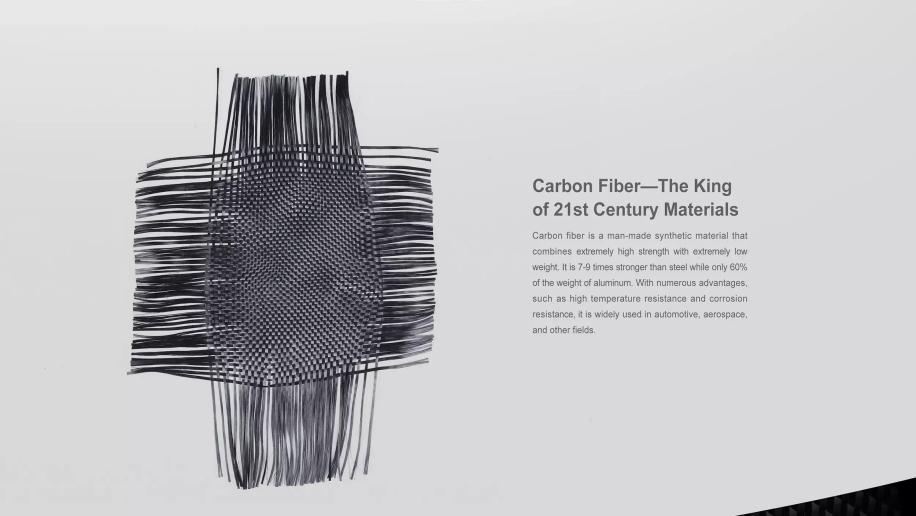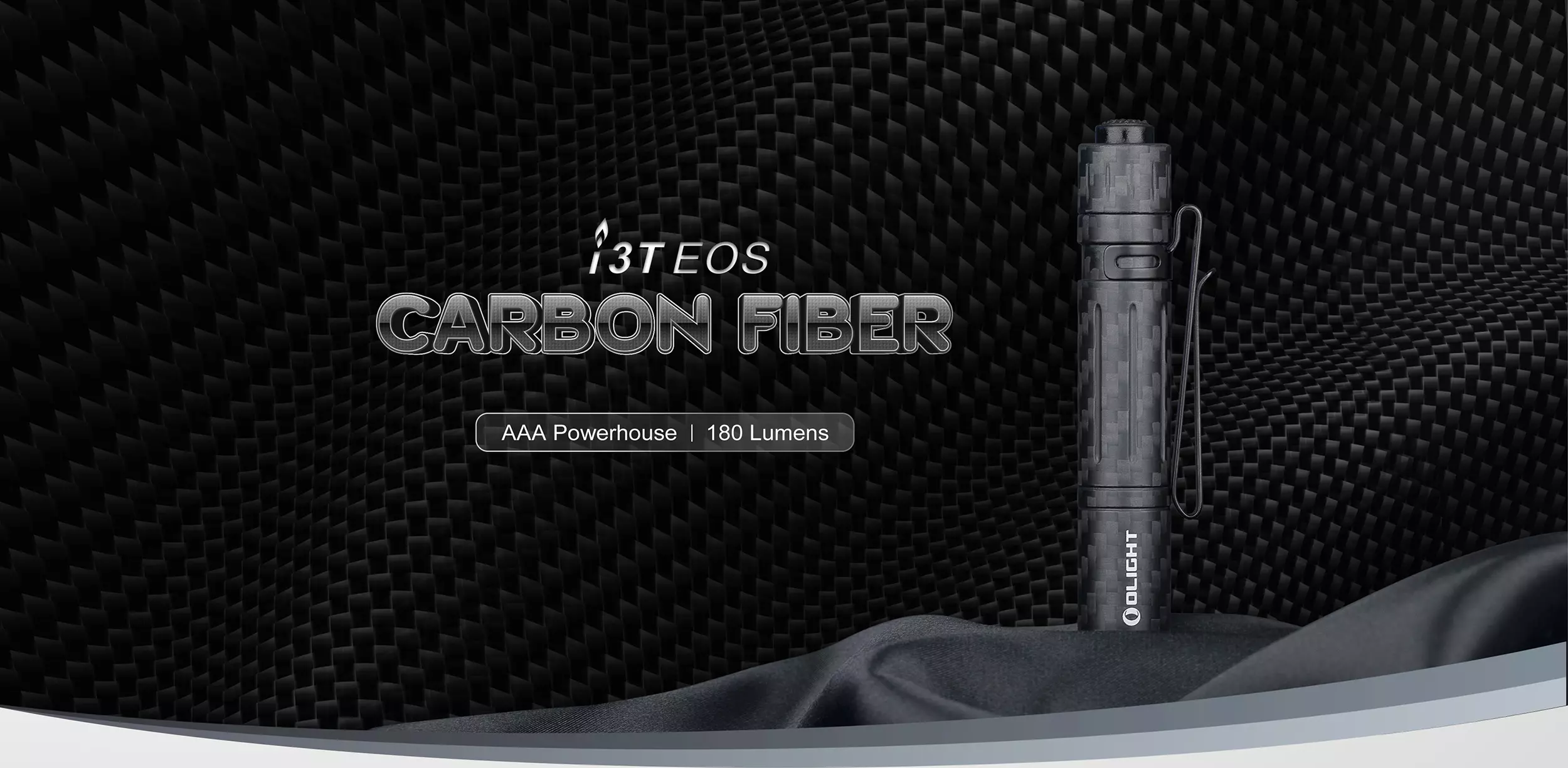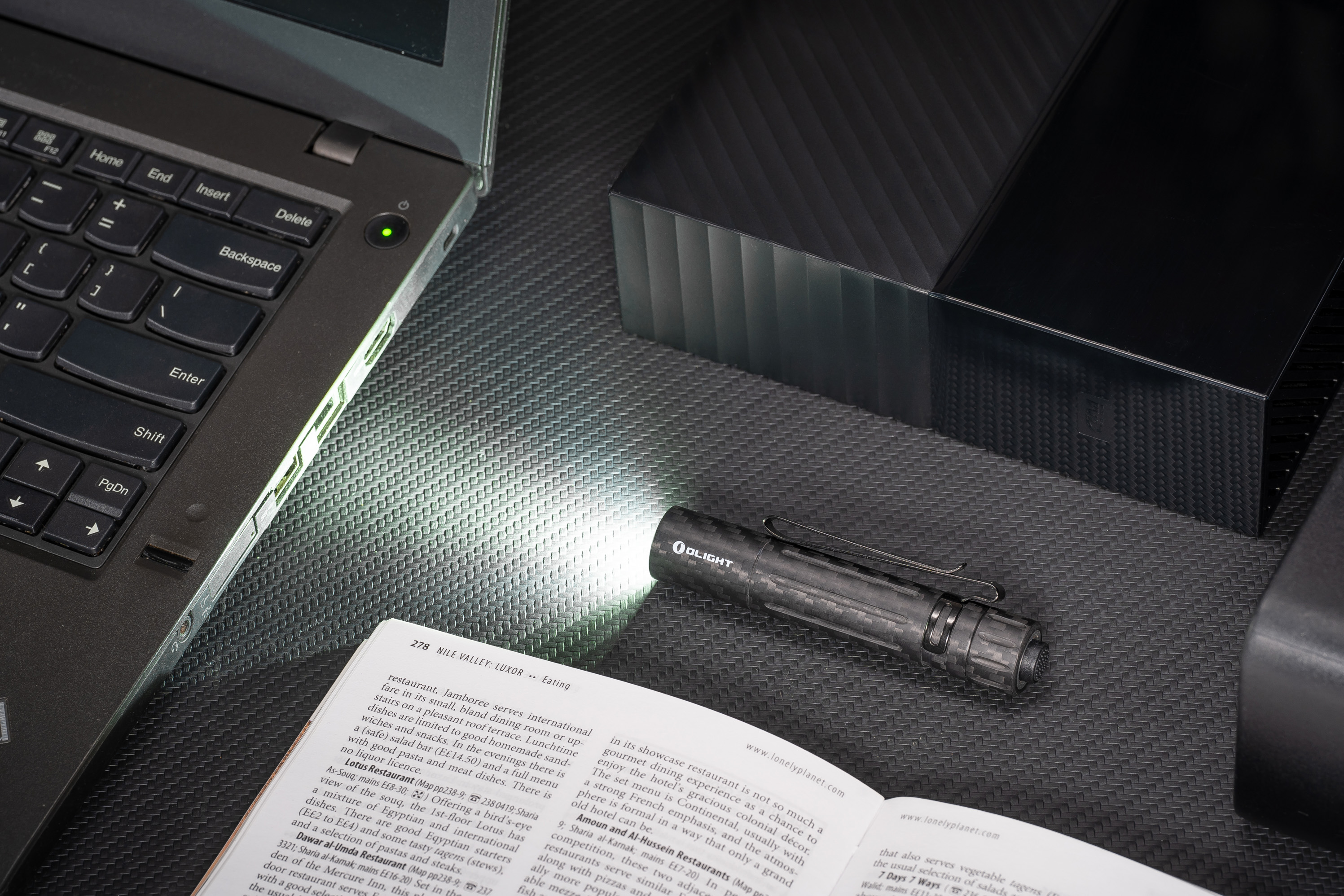Introduction
In recent years, carbon fiber has emerged as a popular material choice for high-end flashlights. Its optimal combination of strength, lightweight properties, and corrosion resistance make it an attractive option for performance-driven lighting solutions. Premium flashlight brands have increasingly incorporated carbon fiber into their tactical, outdoor, and everyday carry models. In this comprehensive guide, we will explore the characteristics of carbon fiber, compare it to alternative materials, examine what makes carbon fiber flashlights unique, showcase examples from leading manufacturer Olight, and discuss the future potential of this innovative material.
What is Carbon Fiber?
At its most basic level, carbon fiber is composed of carbon atoms bonded together in microscopic fibrils about 5-10 micrometers in diameter, or approximately 1/1000th the width of a human hair. It is created through a manufacturing process that involves heating synthetic or organic precursor fibers to temperatures above 2000°C under minimal oxygen levels. This pyrolysis leads the polymer fibers to decompose and carbonize, forming long chains of carbon atoms that crystallize into carbon fibers. The result is an extraordinarily strong yet lightweight material—carbon fibers are roughly five times stronger than steel but have only one-quarter of the density. These properties have made carbon fiber highly desirable for a variety of applications from bicycles to vehicles where rigidity and weight reduction are important factors. It can also be used as a body material for making flashlights.

Common Carbon Fiber Applications
Outside of the flashlight world, carbon fiber is commonly used in bicycles where its stiffness-to-weight ratio aids in acceleration and climbing. The material is also utilized extensively in aerospace, wind energy, industrial and infrastructure projects thanks to its strength and corrosion resistance. On a smaller scale, consumers interact with carbon fiber in tennis rackets, golf clubs, baseball bats, ski poles, fishing rods and similar sports equipment seeking enhanced performance. Within the tactical and outdoor gear sectors, high-end body armor, helmets and protective cases increasingly incorporate carbon at a premium price point. As carbon manufacturing techniques progress, the material has become viable for mass applications such as automobile components to replace heavier steel parts.
Types of Flashlight Materials
When designing a flashlight, engineers must carefully consider the physical attributes and limitations of the materials involved. The most common choices and their characteristics are:
● Aluminum: Very durable, resistant to corrosion and scratching. However, aluminum is considerably heavier than other popular flashlight materials. It is favored for budget and entry-level lights.
● Plastic: The lightest material option helps compact designs but lacks the durability of metal counterparts. Plastic housings tend to show wear over time and cannot withstand major impacts or extreme temperatures. Budget lights most commonly use plastic.
● Stainless steel: Exceptionally rugged and long-lasting and resistant to corrosion from saltwater or chemicals. However, the density of steel makes for heavy flashlight units undesirable for everyday carry. Best suited for industry or heavy-duty uses.
● Carbon fiber: Weighs roughly half as much as aluminum yet exceeds it in tensile strength. Carbon fiber holds up against impacts, resists corrosion, and efficiently dissipates heat—making it ideal for handheld lights demanding high performance.
● Titanium: Extremely tough and corrosion resistant but expensive. Used in premium dive/tactical lights and those meant for heavy shocks and vibration. A bit heavier than carbon fiber.
● Copper: Often used as a heat-conducting material within flashlight bodies to help disperse heat from bright LEDs. Sometimes seen as an external material too due to its anti-microbial properties.
● Brass: Provides durability and corrosion resistance while being cheaper than metals like titanium. Usually just used for bezel rings, clips, or accents rather than full flashlight bodies.
● Glass/Polycarbonate: Common materials for lens covers, protecting the LED from impact and elements while allowing light to pass through efficiently. Tempered glass is shatter-resistant.
In summary, the material used for a flashlight's body and components significantly impacts its performance, lifespan, and cost. While affordable materials like aluminum and plastic get the job done for basic lighting needs, more demanding users appreciate the rugged properties of expensive metals. Copper, brass and even gold provide enhanced cooling and aesthetic qualities that improve the user experience over the long run. Glass and specialized plastics excel at protecting fragile LED components.
Advanced materials each offer advantages tuned to specific usage scenarios. Carbon fiber prioritizes strength and lightweight durability for EDC convenience. Titanium's corrosion resistance and impact resilience make it suited to hazardous environments. Meanwhile, a blend of different materials - like a tough glass lens paired with an aluminum shell - provides balanced performance at an attractive price point. Ultimately, discerning flashlight aficionados will choose models engineered with materials befitting their exacting needs and applications.
Characteristics of Carbon Fiber Flashlights
With its unique attributes, carbon fiber transforms the capabilities of tactical and outdoor flashlights. Several distinguishing characteristics of carbon fiber lighting solutions include:
● Lightweight design: At less than half the density of metals like aluminum, carbon fiber shines in its strength-to-weight ratio. Lights made from this material feel comfortably balanced and bare minimal fatigue during extended use.
● Aesthetic looks: The weave pattern of carbon fiber imbues flashlights with an elegant technical aesthetic appealing to users. Its uniform texture and dark tones contrast alternative metals.
● Durability: On a molecular level, the crystalline bonds within carbon fiber render it highly resistant to impacts, scuffs and environmental stressors like water, chemicals or temperature swings. It preserves functionality over years of demanding use.
● Heat dissipation: Unlike plastics prone to retain warmth, carbon efficiently transfers thermal energy away from intense LEDs. This allows carbon lights to sustain higher lumen outputs for longer without risk of overheating internal components.
Carbon fiber's properties overhaul flashlight capabilities. Its attributes optimize user experience, durability, and performance - cementing its appeal for premium lights.
Olight Carbon Fiber Flashlight Models
As the global leader in specialty lighting, Olight produces many of the finest carbon fiber flashlights available. Here are two popular models making innovative use of this premium material:
Olight i3T EOS Carbon Fiber Flashlight
A minimalist EDC light, Olight's first carbon fiber light, the i3T generates 180 lumens from a single AAA battery. At only 3.5 inches long and weighing just 1.46 ounces, its diminutive size is enabled by a aircraft-grade carbon fiber body that is impressively durable. Users appreciate the convenient keychain carry and simple tail switch operation and mode transitions this lightweight model provides.

Olight i5R Carbon Fiber EDC Flashlight
Featuring a max throw of 64 meters, the i5R outputs 350 lumens while maintaining a pocket-friendly 2.01 ounce mass. Its fusion of durable carbon fiber and aerospace-grade aluminum alloy construction paired with tactical tail switches withstand the demands of everyday carry. Multiple lighting modes, battery level indicator and ease of recharging via magnetic tail make it ultra-versatile. Its versatility proves popular for security professionals and outdoor aficionados in need of a go-anywhere light.

The Future of Carbon Fiber Flashlights
Going forward, carbon fiber seems poised to become standard material for high-end EDC lights where a svelte size remains critical alongside rugged performance. Its proliferation into durable specialty fields including law enforcement, firefighting and military applications could accelerate as well with advancements in weaving techniques that reduce manufacturing costs. Equally probable is diversifying the role of carbon composites like carbon nanotubes integrated into LED lenses or drivers to further enhance thermal management, durability and lighting effects. Whether utilized alone or as a supplement to metals, carbon fiber flashlights are sure to continually innovate and reshape expectations of Peak output, dependability and elegant design within the industry for years to come.
Frequently Asked Questions
Q1: Is carbon fiber durable enough for everyday carry?
A: Yes, with its high tensile strength carbon fiber can withstand the rigors of daily use significantly better than plastics or some metals. Proper sealing and anodization also protects the material from corrosives or abrasion. Many veteran users EDC carbon lights continuously for years without apparent wear.
Q2: How does carbon fiber handle extreme temperatures?
A: Carbon fiber maintains its structure across a wide spectrum from freezing to over 300°C/570°F. Any minor expansion or contraction during temperature fluctuations does not compromise its integrity. This makes carbon fiber perfect for flashlights demanding heat dissipation or use in varied climates.
Q3: What are the disadvantages of carbon fiber?
A: Higher production costs mean carbon fiber lights usually carry premium price tags compared to aluminum. Repairing damage may also prove complex versus replacing simple metal parts. Beyond this, carbon fiber performs on par or exceeds most materials in flashlights.
Q4: What industries are driving innovation in carbon materials?
A: Aerospace consistently leads developments in weaving stronger, more durable carbon fiber variants for aircraft components seeking reduced weight. Electric vehicles also push advancements to replace heavier metal parts. These cutting-edge sectors elevate carbon fiber technology disponbale across various consumer markets.
Conclusion
With a bright future ahead, carbon fiber is emerging as the new standard material for top-tier flashlights. Its intrinsic physical qualities that prioritize strength and lightness while enhancing heat transfer and aesthetic appeal make it uniquely matched to the rigorous demands of modern lighting tools. As companies like Olight continue exploiting the infinite potential within carbon composites, flashlight users can expect heightened performance, dependability and convenience from these works of technical art. Those seeking the finest illuminators would do well to explore outstanding carbon fiber models at the pinnacle of the industry.





